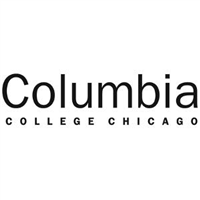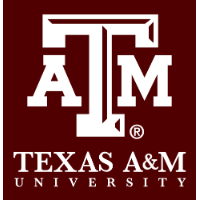What do they do?
Set up, maintain, and dismantle audio and video equipment, such as microphones, sound speakers, connecting wires and cables, sound and mixing boards, video cameras, video monitors and servers, and related electronic equipment for live or recorded events, such as concerts, meetings, conventions, presentations, podcasts, news conferences, and sporting events.
Also known as:
Audio Technician, Audio Visual Specialist (AV Specialist), AV Tech (Audio Visual Technician), Media Technician, Operations Technician, Stagehand, Video Technician
-
17.3%
Change
Ranks #41 in job growth rate220Job Openings
Ranks #16 in net job growth
-
Belmont University
Nashville, TN
-
Texas A&M University-College Station
College Station, TX
-
University of Wisconsin-Madison
Madison, WI
-
Oklahoma State University-Main Campus
Stillwater, OK
-
Texas Tech University
Lubbock, TX
Looking for colleges that offer a specific major? Use the College Match Tool to find your best-matched schools and discover your estimated Net Price!
- Doctorate or Professional Degree (1%)
- Master's degree (6%)
- Bachelor's degree (38%)
- Associate's degree (14%)
- Some college, no degree (24%)
- High school diploma equivalent (14%)
- Less than high school diploma (2%)
People in this career often have these skills:
- Monitoring - Monitoring/Assessing performance of yourself, other individuals, or organizations to make improvements or take corrective action.
- Reading Comprehension - Understanding written sentences and paragraphs in work-related documents.
- Critical Thinking - Using logic and reasoning to identify the strengths and weaknesses of alternative solutions, conclusions, or approaches to problems.
- Operations Monitoring - Watching gauges, dials, or other indicators to make sure a machine is working properly.
People in this career often know a lot about:
- Computers and Electronics - Knowledge of circuit boards, processors, chips, electronic equipment, and computer hardware and software, including applications and programming.
- Communications and Media - Knowledge of media production, communication, and dissemination techniques and methods. This includes alternative ways to inform and entertain via written, oral, and visual media.
- English Language - Knowledge of the structure and content of the English language including the meaning and spelling of words, rules of composition, and grammar.
- Telecommunications - Knowledge of transmission, broadcasting, switching, control, and operation of telecommunications systems.
- Fine Arts - Knowledge of the theory and techniques required to compose, produce, and perform works of music, dance, visual arts, drama, and sculpture.
- Engineering and Technology - Knowledge of the practical application of engineering science and technology. This includes applying principles, techniques, procedures, and equipment to the design and production of various goods and services.
- Customer and Personal Service - Knowledge of principles and processes for providing customer and personal services. This includes customer needs assessment, meeting quality standards for services, and evaluation of customer satisfaction.
People in this career often have talent in:
- Near Vision - The ability to see details at close range (within a few feet of the observer).
- Oral Expression - The ability to communicate information and ideas in speaking so others will understand.
- Oral Comprehension - The ability to listen to and understand information and ideas presented through spoken words and sentences.
- Problem Sensitivity - The ability to tell when something is wrong or is likely to go wrong. It does not involve solving the problem, only recognizing that there is a problem.
- Information Ordering - The ability to arrange things or actions in a certain order or pattern according to a specific rule or set of rules (e.g., patterns of numbers, letters, words, pictures, mathematical operations).
- Written Comprehension - The ability to read and understand information and ideas presented in writing.
- Written Expression - The ability to communicate information and ideas in writing so others will understand.
- Deductive Reasoning - The ability to apply general rules to specific problems to produce answers that make sense.
People in this career often do these activities:
- Notify others of equipment problems.
- Maintain recording or broadcasting equipment.
- Coordinate activities of production personnel.
- Convert data among multiple digital or analog formats.
- Maintain records, documents, or other files.
- Operate communications, transmissions, or broadcasting equipment.
- Monitor broadcasting operations to ensure proper functioning.
- Operate control consoles for sound, lighting or video.
- Mix sound inputs.
- Edit audio or video recordings.
- Operate audio recording equipment.
- Construct distinctive physical objects for artistic, functional, or commercial purposes.
- Set up still or video cameras or related equipment.
- Coordinate logistics for productions or events.
- Determine technical requirements of productions or projects.
- Draw detailed or technical illustrations.
- Collaborate with others to determine technical details of productions.
- Maintain inventories of materials, equipment, or products.
- Study details of musical compositions.
- Train others on work processes.
- Inform viewers, listeners, or audiences.
- Write material for artistic or entertainment purposes.
- Compile technical information or documentation.
- Maintain logs of production activities.
- Write informational material.
This page includes data from:

 Occupation statistics: USDOL U.S. Bureau of Labor Statistics Occupational Employment Statistics
Occupation statistics: USDOL U.S. Bureau of Labor Statistics Occupational Employment Statistics









